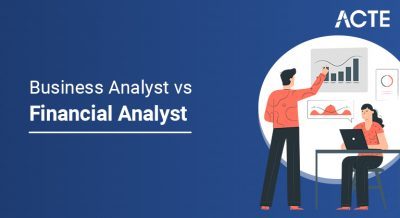
- Google Data Studio and Power BI
- Key Features of Google Data Studio
- Key Features of Power BI
- Data Source Connectivity in Both Tools
- Report Customization and Visualization Capabilities
- Performance and Scalability Comparison
- Cloud vs. On-Premise Availability
- Cost and Licensing Comparison
- Security and Compliance Considerations
- Use Cases for Google Data Studio vs. Power BI
- Which One is Better for Your Business?
Google Data Studio and Power BI
In today’s data-rich enterprise environment, business intelligence (BI) platforms serve as central pillars for deriving actionable insights from complex datasets. Google Data Studio and Power BI are two of the most notable tools in this space, each with strengths and trade-offs. Google Data Studio is developed by Google and emphasises a modern, cloud-native visualisation and dashboarding tool, with strong integration into Google’s ecosystem (Google Analytics, Google Sheets, Google Ads, BigQuery), making it a valuable skill to learn during Business Analyst Training . It is often selected for marketing dashboards, simpler BI use-cases and organisations already embedded in Google Workspace. Power BI, developed by Microsoft, is designed for strong integration with Office 365, Azure, Excel, and the broader Microsoft stack. It emphasises accessibility, self-service analytics, rapid dashboard building, and cost-effective entry, while also offering enterprise-grade modelling and governance. While both tools are aligned in purpose visualising, modelling, and enabling insights the difference lies in architecture, user experience, scale, governance and ecosystem fit. In the following sections we’ll explore these dimensions in depth.
Key Features of Google Data Studio
Google Data Studio’s strengths include simplicity, affordability, collaboration and seamless Google ecosystem integration.
- Free to use – One of the biggest selling points of Data Studio is that its core functionality is available at no licence cost, making it very appealing for startups, small teams or marketing-driven dashboards.
- Cloud-native and browser-based – There is no desktop install required; users access it via browser, which is convenient for many users and organisations, especially when comparing modern BI tools like Qlik Sense vs Power BI .
- Real-time collaboration and sharing – Because it builds on Google’s collaboration model (Drive, Sheets), multiple users can view/edit reports, share via link, embed dashboards, and collaborate in near-real time.
Key Features of Power BI
Power BI brings a more comprehensive BI platform, balancing self-service ease with enterprise capability.

- Broad data connectivity and modelling – Power BI supports a large number of data sources (cloud and on-premises), sophisticated data modelling using Power Query (M language) and DAX (Data Analysis Expressions) for calculated columns, measures, relationships, etc.
- Rich visualisations and customisation – A wide library of built-in visuals, marketplace custom visuals, drill-through, bookmarks, Q&A (natural language), and strong interactive capabilities are often discussed in comparisons such as MicroStrategy vs Power BI .
- Self-service plus enterprise governance – Power BI tries to combine the self-service BI model (business users building reports) with enterprise-scale features (data modelling, governance, role-based access, large volumes) depending on edition.
- Built-in connectors to Google products (Google Analytics, Google Ads, BigQuery, Google Sheets) making it very strong if you’re heavily Google-based.
- Also supports many third-party/community connectors (e.g., advertising, media, content sources). However, native connectivity to on-premises databases, certain enterprise systems is more limited or requires third-party add-ons.
- Data blending (merging multiple sources) is supported, but more advanced integration/ETL is limited compared to full BI tools. Power BI
- Very broad connectivity: Excel, CSV files, on-premises databases (SQL Server, Oracle, etc.), cloud services (Azure, Salesforce, Google Analytics, etc.), and many web APIs all of which strengthen its Business Intelligence .
- Supports import mode, DirectQuery/live connections, incremental refresh, hybrid models.
- Strong data modelling capabilities once sources are brought in. Comparison
- If your data ecosystem is largely Google-centric, Data Studio gives rapid connectivity and ease of use.
- If you have diverse sources (on-premises+cloud, legacy data warehouses, many third-party systems), Power BI offers more flexibility, coverage and depth.
- Data refresh/real-time capability: Power BI tends to have stronger support for real-time or near real-time connections and large datasets. Data Studio may be limited by connector refresh rates or quotas.
- Provides a drag-and-drop report editor in browser; easy for business users.
- A selection of visuals: charts, tables, maps, scorecards, custom fonts and branding. It’s suitable for many standard reporting needs.
- However, number of advanced visuals, custom visuals and interactivity (e.g., drill-through, bookmarks, complex calculations) are more limited compared to heavy duty BI tools. Power BI
- Full feature-set for visuals: large library, custom visuals marketplace, bookmarks, drill-through, tooltips, Q&A (natural language), etc.
- Advanced layout options, mobile-optimized views, embedding in other apps, fine-grained formatting and custom visuals.
- Because of the modelling capabilities beneath, you can build complex measures, relationships, dynamic visuals, and even create detailed Heatmaps in Power BI . Comparison
- If your dashboard needs are straightforward build and share standard charts and tables quickly Data Studio may be more than enough.
- If your needs include deep interactivity, complex modelling logic feeding visuals, many custom visual types, embedded analytics or multi-page sophisticated dashboards, Power BI offers more power.
- Also consider design vs speed: Data Studio may get your team up and running faster; Power BI may take more effort to create but delivers richer capability.
- Suited for small to medium-scale dashboards; excellent for marketing analytics, Google-ecosystem data sources, relatively modest data volumes.
- As dataset size, data complexity or number of concurrent users grow, some performance constraints may appear (refresh quotas, latency, limited modelling capacity). Some users report that for heavy use it struggles compared to enterprise tools. Power BI
- Designed to scale more broadly: For large datasets (import mode), direct query, incremental refresh, and large organisational deployments (especially with Premium capacity) it can handle significant load.
- However, performance is still dependent on how well data modelling is designed and how well infrastructure (data sources, gateways, compute) is optimised. During Business Analyst Training , learners often explore how large, complex models without careful design may degrade performance. Comparison
- For many organisations with moderate BI needs, both tools will “get the job done.”
- But for enterprise-scale deployments (many users, large data volumes, complex models, real-time data, heavy concurrency), Power BI has the headroom, while Data Studio might require workarounds or external architecture.
- Therefore scalability is clearly an advantage for Power BI; Data Studio is appealing for simpler use-cases and lower cost.
- Entirely cloud-based tool (browser-based) there is no on-premises install for Data Studio itself. This is suitable for organisations comfortable with cloud and no heavy local infrastructure.
- This means less overhead for installation/maintenance but less flexibility if you need on-premises only deployment for regulatory or data-residency reasons. Power BI
- Offers cloud service (Power BI Service) and also on-premises/hybrid deployment via Power BI Report Server for organisations that have regulatory, security, or offline requirements, demonstrating why the Power BI Tool is Best for Data Visualization .
- This gives more flexibility for organisations that cannot rely fully on cloud or have legacy on-premises infrastructure. Comparison
- If your organisation is cloud-first and comfortable with SaaS, Data Studio may fit well.
- If your organisation requires on-premises deployment, has hybrid architecture or needs regulatory control over data residency, Power BI offers more options.
- Deployment strategy affects cost, maintenance, security and governance choose accordingly.
- Core functionality of Data Studio is free for users. This makes it extremely attractive for startups, small teams or marketing dashboards where cost sensitivity is high.
- Caveats: while the tool is free, some third-party connectors or enterprise-grade features (e.g., BigQuery compute cost, advanced connectors) may incur costs.
- Because there is no paid “premium” version for Data Studio (in the same sense as Power BI), the scaling cost is minimal (licence-wise) though infrastructure/connector cost may rise, which is often a key consideration when learning What is Google Data Studio . Power BI
- Freemium model: Power BI Desktop is free; to share/publish you typically need Power BI Pro (~US$9.99/user/month) in many regions. Premium licensing (capacity-based) is significantly more expensive for enterprise scale.
- So cost varies significantly depending on number of users, data volume, features needed, whether on-premises or cloud, whether embedding is required.
- The Total Cost of Ownership (TCO) includes licensing + data infrastructure + training + governance. Comparison
- For small-scale use, Data Studio’s free model is very compelling — minimal cost barrier.
- For larger scale use, Power BI brings more features but also higher cost; you must budget accordingly.
- If you pick Power BI, you need to look at the number of users, data model size, refresh frequency, concurrency, embedding needs — these all affect cost.
- Since it’s cloud-based and part of Google’s ecosystem, security features include Google account authentication, HTTPS encryption, role-based sharing via Google Drive model.
- However, compared to enterprise-grade BI platforms, it may lack some advanced features such as detailed audit logs, row-level security (RLS) in the same depth, granular governance of model access. Some users highlight gaps when dealing with highly sensitive data. Power BI
- Offers robust security features: row-level security, data encryption at rest/in-transit, integration with Azure Active Directory (AAD) for identity/authentication, data gateway for secure on-premises access, audit logs, governance tools, etc., which are essential skills for an MSBI Developer Role .
- For regulated industries (finance, healthcare, government) where strict controls are needed, Power BI’s security and compliance story is stronger.
- As always, security depends not just on the tool, but how you implement it (data governance, user roles, data architecture, network security). Comparison
- If your data is moderately sensitive (marketing, dashboards, non-regulated), then Data Studio may suffice.
- If your data is highly sensitive, regulated, or you need strong governance, Power BI is more appropriate.
- Make sure also to evaluate whether the organisation’s identity/access policies, audit requirements, embedding needs align with your chosen tool.
- Organisations heavily using Google products (Analytics, Ads, Sheets, BigQuery) and needing dashboards around marketing, web analytics, digital campaigns.
- Small to medium-sized businesses or departments that need quick, low cost dashboarding without heavy modelling or large data volumes.
- Teams wanting rapid deployment, collaboration, external sharing with clients, and the ability to embed dashboards easily in websites often learn Who is a Business Intelligence Analyst to understand how these BI tools are used in practice. Power BI
- Organisations needing a full BI platform: multiple data sources (on-prem + cloud), large data volumes, governance, multiple user roles, embedding analytics into business processes.
- Companies already in Microsoft ecosystem (Office 365, Azure, SharePoint, Teams) and wanting tight integration.
- Use cases where data modelling, calculated measures, complex relationships, drill-through, multi-page dashboards, mobile access, real-time or near-real-time data are needed.
- Budget & scale: If you have limited budget, moderate needs, want to get started right away, Data Studio is very attractive. If you need enterprise scale, many users, heavy data modelling, go for Power BI.
- Ecosystem: If your company is heavily invested in Google tools, Data Studio is a natural fit. If your enterprise uses Microsoft tools (Excel, Azure, SharePoint) then Power BI integrates more naturally.
- Data sources and architecture: If your data is largely cloud-based, Google-centric, and moderate in size Data Studio is fine. If you have on-premises databases, data warehouses, big data, or varied sources Power BI is more capable and often recommended for professionals undergoing Business Analyst Training .
Interested in Obtaining Your Business Analyst Certificate? View The Business Analyst Training Offered By ACTE Right Now!
Data Source Connectivity in Both Tools
How many and how well tools connect to different data sources is a critical comparison.
- Google Data Studio
Thus, for connectivity and integration capability, Power BI leads in breadth and depth; Data Studio leads in ease of connectivity for Google products and low-cost entry.
Report Customization and Visualization Capabilities
How easily and richly you can create visual reports and dashboards is key.
- Google Data Studio
To Earn Your Business Analyst Certification, Gain Insights From Leading Data Science Experts And Advance Your Career With ACTE’s Business Analyst Training Today!
Performance and Scalability Comparison
Performance (report refresh, responsiveness, handling large volumes) and scalability (growing user base, large data sets) matter when BI becomes core.
- Google Data Studio
Cloud vs. On-Premise Availability
Deployment flexibility: is the tool cloud-only, or can it operate on-premises/hybrid?

- Google Data Studio
Cost and Licensing Comparison
Budget and licensing model often decide which tool will be viable.
- Google Data Studio
Want to Pursue a Business Analyst Master’s Degree? Enroll For Business Analyst Master Program Training Course Today!
Security and Compliance Considerations
Every analytics platform must address data security, governance, access control, compliance.
- Google Data Studio
Go Through These Business Analyst Interview Questions and Answers to Excel in Your Upcoming Interview.
Use Cases for Google Data Studio vs. Power BI
Let’s outline typical use cases where each tool might shine.
- Google Data Studio
Which One is Better for Your Business?
There is no one-size-fits-all answer; the “better” tool depends on your business context, needs, budget, ecosystem and skills. Here’s how you might decide:
Choose Google Data Studio when you want a low-cost, easy to adopt, fast‐time-to-value dashboarding tool, especially if you’re using Google’s ecosystem and you don’t have heavy modelling or enterprise-scale needs.Choose Power BI when you require a robust BI platform capable of handling large scale, complex modelling, many data sources, strong integration, governance and security and you have the budget, infrastructure and skills to support it.




